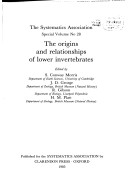Systematics Association Special Volume
1 primary work • 2 total works
Book 11
Cladistics
by Peter L. Forey, etc., C.J. Humphries, I.J. Kitching, R.W. Scotland, D.J. Siebert, and D M Williams
Published 1 November 1992
Systematics underpins all biology. Cladistics is a systematic method of classification which classifies organisms on the basis of common ancestry rather than on simple anatomical similarity. True phylogenic relationships are thus revealed. This book is based on a course sponsored by the Systematics Association. To introduce the subject, the principle of parsimony and methods for character coding and determining character polarity are first presented. Methods of cladistic tree-building follow, and tree statistics are detailed. Alternatives to parsimony, molecular applications of cladistics and the relevance of fossils are then discussed. The concluding chapters review two important topics in cladistics: cladistic biogeography and the implementation of cladistic results in systematics. This book provides an account of the techniques of modern cladistics, and should prove useful for students interested in systematics and comparative studies.
The Origins and Relationships of Lower Invertebrates
by Simon Conway Morris and etc.
Published 1 October 1985
The lower invertebrates - from sponges to annelids - have been investigated for over a century, but there are fundamental problems that are only now coming under scrutiny. This book gives fresh impetus to the subject area, presenting a broad synthesis of current trends and pointing out areas likely to develop rapidly over the next few years. It emphasizes particularly active research areas, such as ultrastructural (TEM, SEM) work and phylogenetic methods - especially cladistics.

